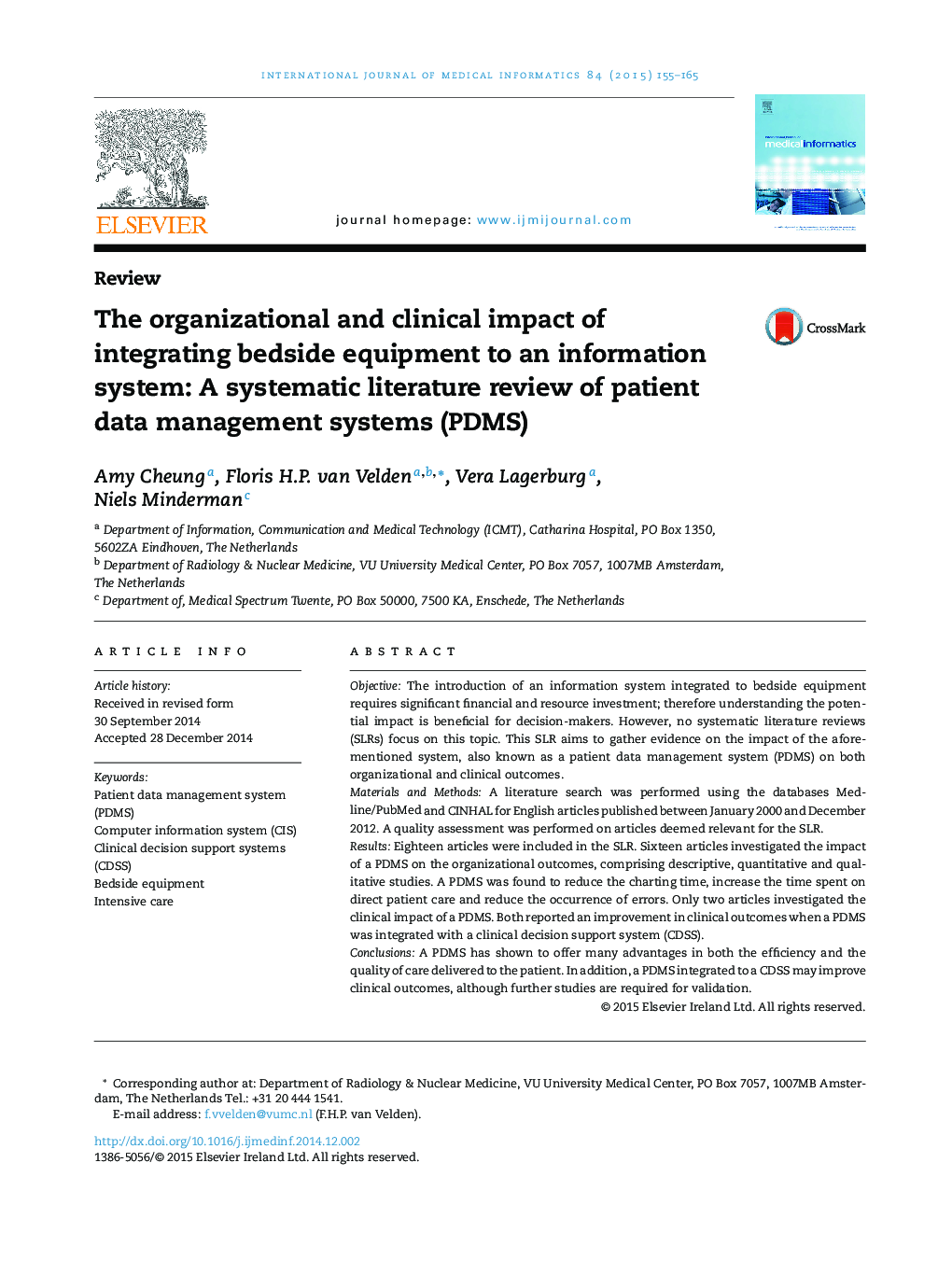| Article ID | Journal | Published Year | Pages | File Type |
|---|---|---|---|---|
| 516731 | International Journal of Medical Informatics | 2015 | 11 Pages |
•Few articles provide sufficient information describing the implementation of a PDMS.•A PDMS reduces the charting time, increases direct patient care and reduce errors.•The workflow should be optimized to integrate the PDMS in the patient care process.
ObjectiveThe introduction of an information system integrated to bedside equipment requires significant financial and resource investment; therefore understanding the potential impact is beneficial for decision-makers. However, no systematic literature reviews (SLRs) focus on this topic. This SLR aims to gather evidence on the impact of the aforementioned system, also known as a patient data management system (PDMS) on both organizational and clinical outcomes.Materials and MethodsA literature search was performed using the databases Medline/PubMed and CINHAL for English articles published between January 2000 and December 2012. A quality assessment was performed on articles deemed relevant for the SLR.ResultsEighteen articles were included in the SLR. Sixteen articles investigated the impact of a PDMS on the organizational outcomes, comprising descriptive, quantitative and qualitative studies. A PDMS was found to reduce the charting time, increase the time spent on direct patient care and reduce the occurrence of errors. Only two articles investigated the clinical impact of a PDMS. Both reported an improvement in clinical outcomes when a PDMS was integrated with a clinical decision support system (CDSS).ConclusionsA PDMS has shown to offer many advantages in both the efficiency and the quality of care delivered to the patient. In addition, a PDMS integrated to a CDSS may improve clinical outcomes, although further studies are required for validation.
